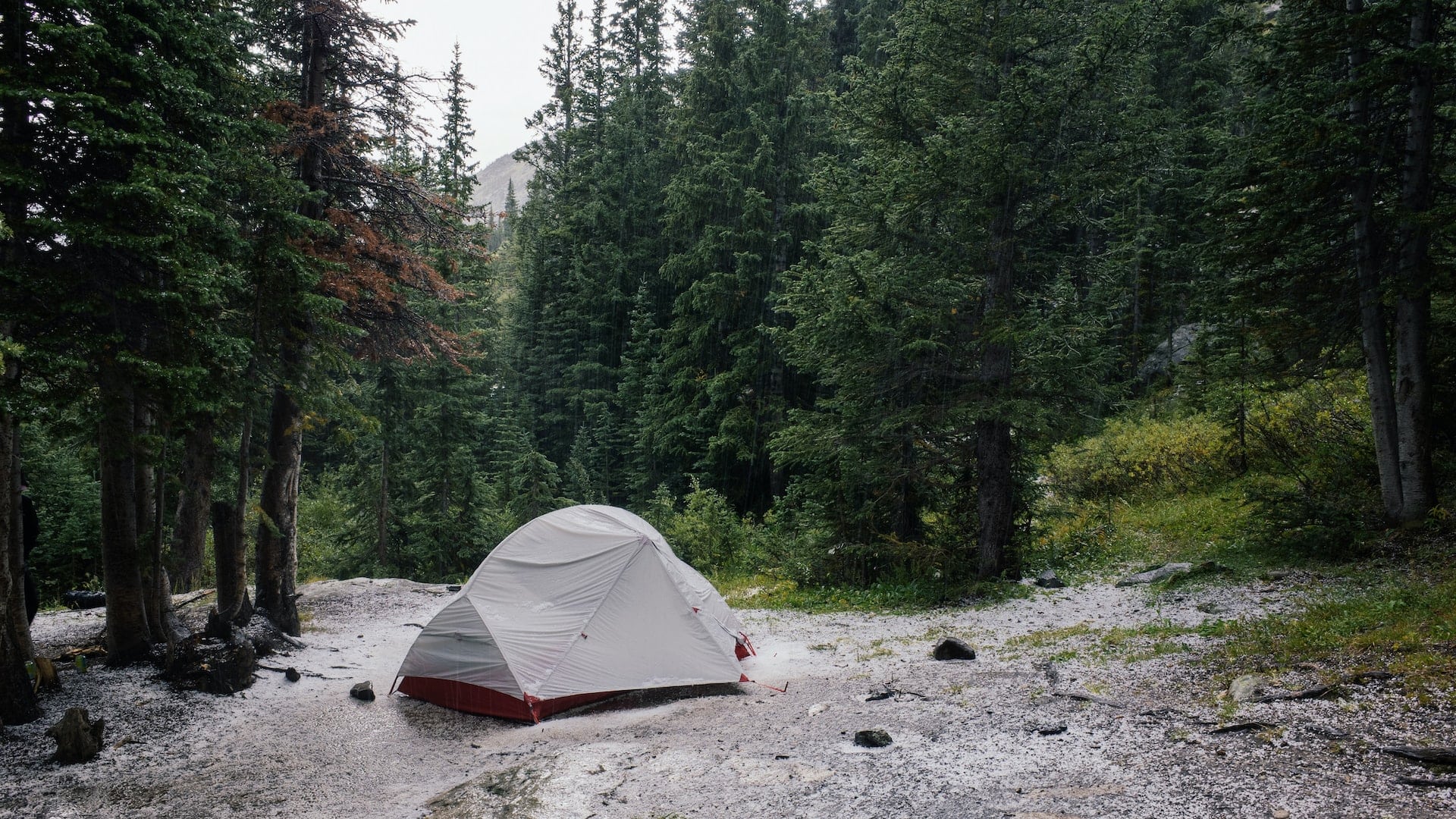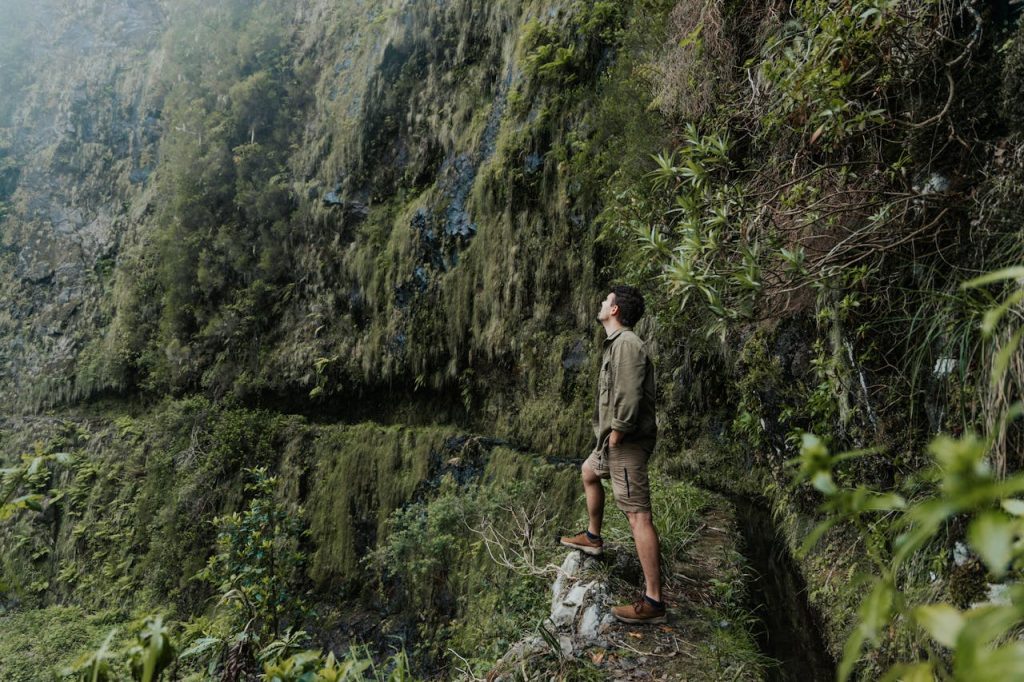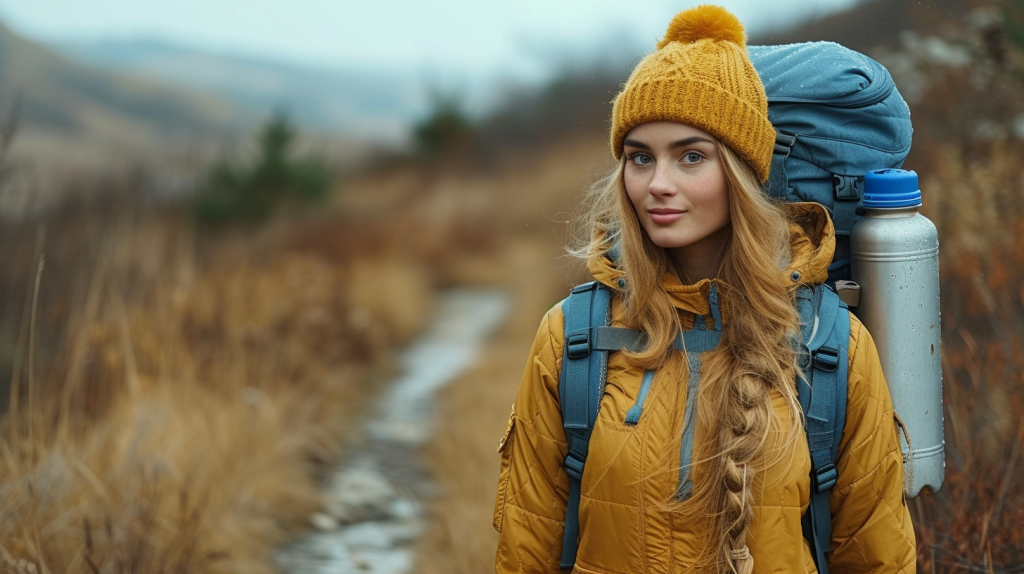Tent camping in the rain can be a fun and rewarding experience with the proper preparation and gear. Rainy weather adds an extra layer of challenge to camping, but you can stay dry and comfortable with proper planning. With these tips and a positive attitude, you can enjoy a memorable and enjoyable tent camping trip, even in the rain.
17 Essential Tips for Tent Camping in the Rain
Table of Contents
ToggleTent camping in the rain can be a fun and memorable experience if you are prepared. Find essential tips to help you stay dry and comfortable:
The best Tents for rainy weather
When looking for a tent for rainy weather, it is essential to consider the following features:
Waterproof material:
Look for waterproof tents with a waterproof coating, such as nylon or polyester.
Sealed seams:
Ensure that the seams are sealed to prevent water from seeping through the rough.
Rainfly:
A rainfly is an additional waterproof layer that is placed over the tent to provide extra protection from rainfall
Good ventilation:
Look for tents with good ventilation to reduce condensation.
Tent shape:
A tent with a steep pitch and a high center height can help prevent water from pooling inside.
Choose the Correct Location for your Tent and Campsite
Choosing a suitable campsite or location for your tent can significantly impact your comfort and experience during a rainy trip. To ensure a dry and pleasant stay, look for a camp on higher ground with a canopy of trees. This will provide natural protection from the rain.
Additionally, avoid setting up your tent in low-lying areas where water runoff can accumulate during heavy rainfall. While the high ground is preferable, it’s also important not to set up camp on the very top of a hill, as these areas can be exposed to wind and other elements. Utilizing trees or brush as a support for a tarp can also add extra protection from the rain. On the other hand, valleys are often the wettest and coldest locations, and you should avoid them.
Bring Waterproof Shoes and Clothing
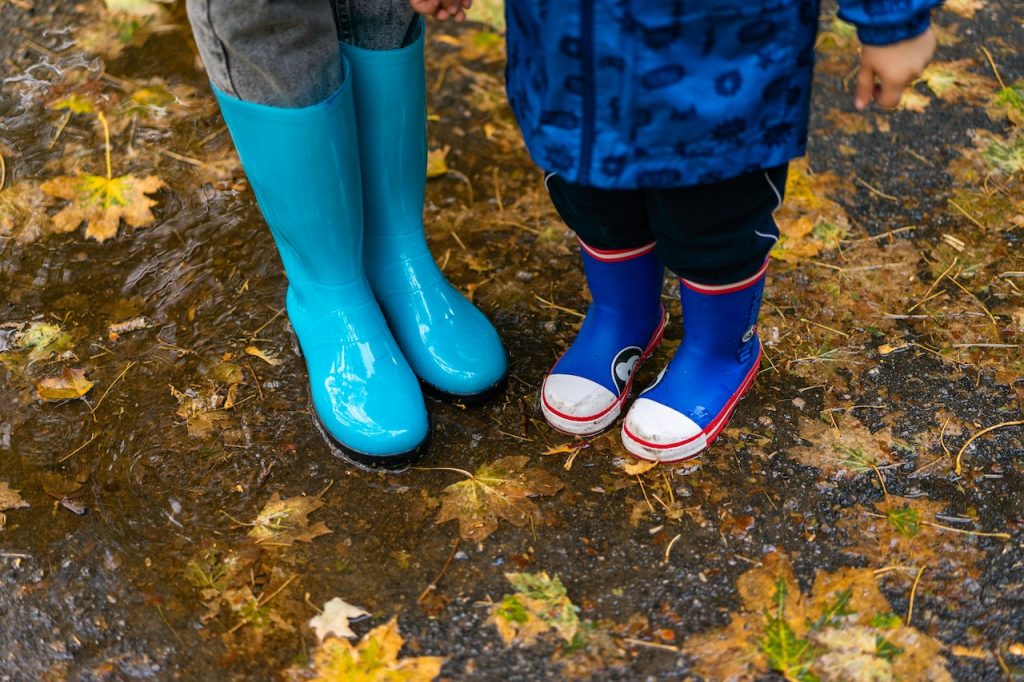
Dressing appropriately in waterproof clothing and footwear during camping in the rain is essential. Although wet feet may seem harmless, spending an entire day in wet socks and shoes can be uncomfortable and lead to regret.
If you can’t afford a shoe purchase, buy waterproof socks instead. Other waterproof items worth considering are inexpensive ponchos, waterproof jackets, waterproof pants, gaiters, or helmets. Whatever you decide, you should keep your clothes dry in the rain.
Tarp Shelter and Paracord for a Camping Trip
A tarp shelter and paracord can be helpful tools for creating a shelter and keeping your tent dry while camping in the rain. The tarp can create a simple roof or a more complex structure, and the paracord can secure the tarp and other gear. This setup is an inexpensive and versatile option for camping, especially in areas where you need to be safe from the elements.
Bring Extra Tarps
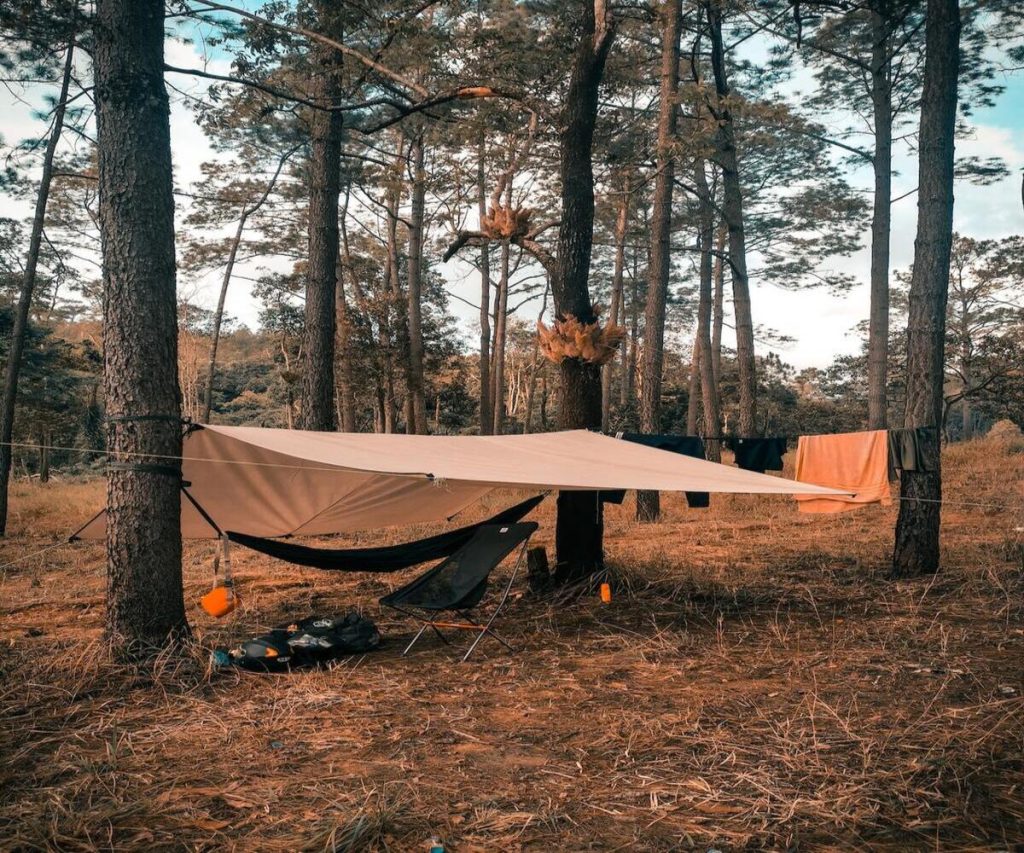
Extra tarps are one of the best things campers can anticipate rain will carry. If you need more than one tarp on a camping trip, take them with you. It should begin to rain, and you can easily cover your equipment and keep the tent dry. In addition, you should also carry an anchor or some other rope to secure your tarp. Extra rope can sometimes prove helpful.
Store Dry Wood when Camping in the rain.
When camping in the rain, it’s essential to store firewood in a dry place to ensure it can be used for cooking or warmth. One option is to keep it under your car, as long as it is protected from the rain.
Rain gear to keep you dry and warm
Camping rain gear is essential to stay dry and warm in wet weather. It includes waterproof boots, jackets, and pants from materials such as Gore-Tex or other waterproof/breathable fabrics. It is also helpful to look for rain gear with sealed seams and zippers and a hood or adjustable drawstrings to protect your head and neck. Create a Covered Gathering & Cooking Area
Establish a protected cooking and dining area while rainy camping trips. To ensure a dry and comfortable experience, consider setting up a pop-up canopy or using tarps and para-cord to create a covered area. This will provide a dry place to sit and eat, reducing the risk of wet tents and ensuring an enjoyable camping trip.
Pack Important Items in Ziploc Bags
When the rain comes on, put valuables into insulated bags. Extra layers of protection on most essential items will assist you in avoiding causing severe problems during the rain. We strongly encourage putting away medical supplies, extra clothes, snacks, and equipment to keep us dry. This was a great start, but when you need to keep your things dry, you should put them in Ziploc bags.
Bring Hand Warmers
During rain camping, it’s a shared experience that the hand gets cold. Cold hands can be tough to prepare, handle small items, or enjoy simple pleasures. It helps keep the hand warmer when rain hits. The little hands warmer will fit into any handbag and stay warm for a few minutes or inside gloves. You will be happy to have the hand warmer.
Add a Bivy Bag
A bivy bag can be a valuable addition to your camping gear for a rainy day. A bivy bag is a small, lightweight, and waterproof shelter that you can use to protect yourself from the elements. This insulation is incredibly durable and helps keep your sleeping bag warm. Alternatively, double the sleeping bag to make it warmer in your room. They are also great for minimalists who want to travel light and be close to nature. Pair a bivy bag with a waterproof groundsheet to protect yourself from the wet ground.
Utilizing Body heat in the sleeping bag
To prevent the discomfort of wearing cold clothes, you can preheat them to a temperature of 98.6°F. Store tomorrow’s outfit in a breathable bag, then place it inside your sleeping bag near your body to keep it warm throughout the night. This way, you can enjoy a comfortable start to your day by having warm clothes ready to put on in the morning.
Pop up shelter
Pop up shelters can be a helpful extra layer to protect your tent in the rainy campsite and provide additional protection and privacy. The pop-up shelter can act as an outer layer over your tent, shielding it from rain and wind. This can keep your tent dry and improve the overall comfort of your camping experience.
Some pop-up shelters also come with sidewalls, adding extra protection and privacy. Pop-up covers are often lightweight, portable, and easy to set up, making them a convenient and practical addition to your camping gear.
What to do when it starts raining?
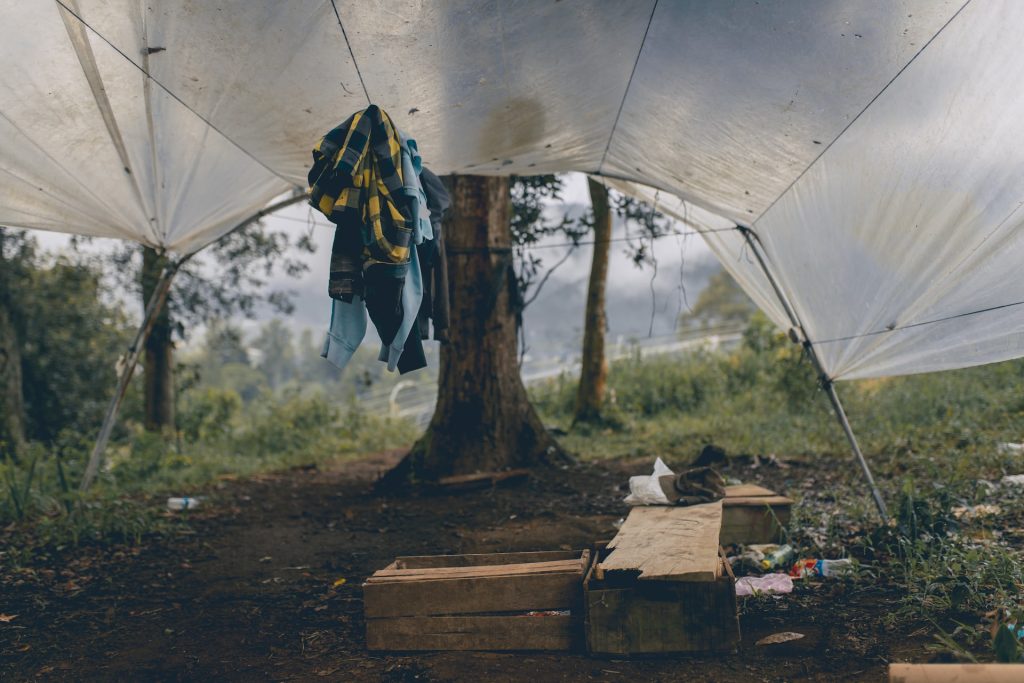
When it starts raining while camping, immediate actions include:
- Set up shelter: If you have a tent, set it up quickly. If not, use a tarp and paracord to create a temporary shelter.
- Cover gear: Cover your gear with a tarp to keep it dry.
- Put on rain gear: Wear rain gear or a waterproof jacket to stay dry.
- Move to a safe area: Avoid camping in low-lying areas that could flood.
- Protect yourself: Avoid exposure to lightning and take shelter in a vehicle or low-lying area if necessary.
Rainy Day Camping Activities
When you have warm temperatures, the weather should not be so bad. Bring a raincoat and get outdoors for a camping trip. Get wet and enjoy the fresh rain and nature! Here are some activities you can do on a rainy day while camping:
- Hiking: Take a peaceful hike in the rain, and enjoy the sounds of nature.
- Reading: Bring a good book and relax in your tent or shelter.
- Cooking: Prepare a warm and comforting meal, such as soup or hot chocolate.
- Games: Play indoor games like cards, chess, or checkers.
- Nature observation: Watch the rain and observe the wildlife around you.
- Photography: Capture the beauty of the rain and the surrounding landscape.
- Yoga or exercise: Do yoga or other indoor exercises to stay active and fit.
- Write in a journal or sketchbook to document your camping trip.
- Listen to music or podcasts on a portable speaker or headphones.
- Use your phone or tablet to watch movies or TV shows, play games, or browse the internet.
- Do some simple exercises or stretches to stay active while stuck inside.
- Have a conversation with your camping companions and get to know each other better.
Bring some fun activities during the rain. Whatever you decide, you should plan the activity, especially for children. As all parents know, children are a little bored easily.
Starting a Fire in the Rain
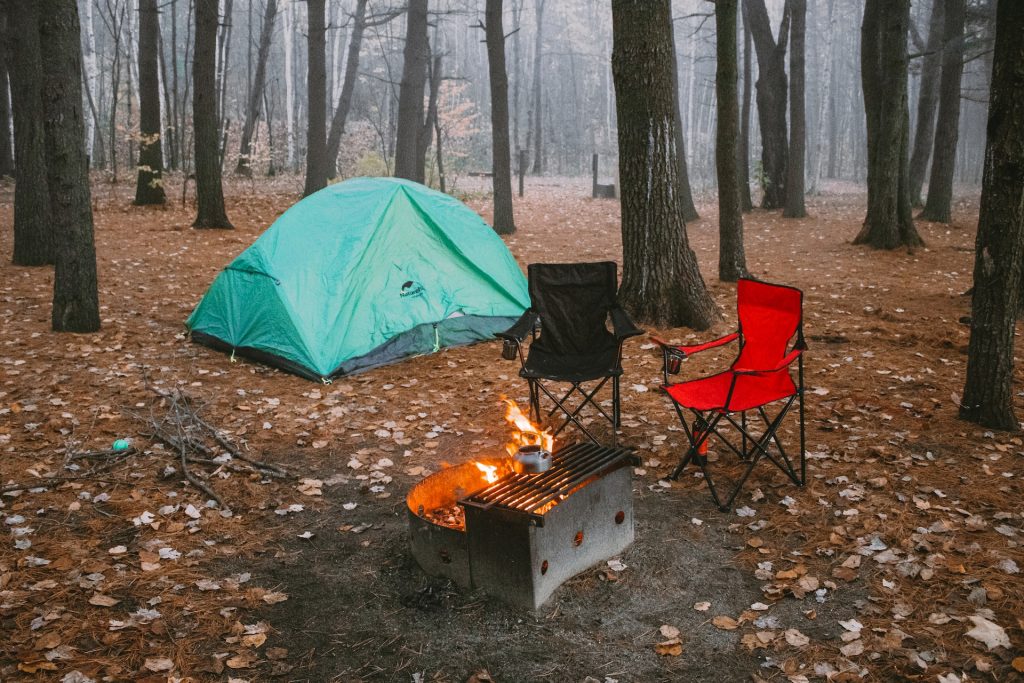
Starting a fire in the rain can be a challenge, but here are a few tips that may help:
- Find dry materials: Look for dry kindling, such as small twigs, leaves, or bark, that you can use to start the fire. Avoid using soaking wet materials, as these will be difficult to ignite.
- Create a fire pit: Dig a shallow pit in the ground and line it with stones or bricks to create a barrier between the fire and the wet ground. This will help to protect the fire from the rain and keep it burning.
- A fire starter: For an easier way to start a fire in a more manageable, you can use a fire starter such as cotton balls soaked in petroleum jelly, dryer lint, or commercial fire starters.
- Cover the fire: Use a tarp or tent fly to cover the fire and protect it from the rain. Make sure to leave a gap for air to circulate, so the fire can get enough oxygen to burn.
- Add fuel gradually: Once the fire is started, add small amounts of energy, giving the fire time to dry out the fuel and burn efficiently.
Note: Always follow fire safety guidelines and be mindful of local regulations when starting a fire in the rain. If conditions are extremely wet, it may be best to wait for better weather before starting a fire.
FAQs
Does rain leak through tents?
Tents are designed to be waterproof, but they can sometimes leak in heavy rain or if they need to be set up correctly. To prevent leaks, ensure you have a tent designed for wet weather, with a waterproof rainfly and a sturdy, water-resistant tent floor. Using a tarp under your tent and pitching it on a slight incline, with the door facing downhill is also a great idea.
You can also use a waterproof sealant or seam tape on any seams or holes in your tent to prevent leaks. However, even the best-prepared tent can sometimes leak in extreme weather conditions, so it’s essential to be prepared for the possibility and have a plan in place in case of heavy rain or leaks.
How much rain can a tent withstand?
The amount of rain a tent can withstand depends on several factors, including the quality and design of the tent, how well it is pitched and set up, and the type of weather conditions it is exposed to. Generally, a high-quality tent with a sturdy rainfly and a waterproof floor should withstand moderate to heavy rain without leaking. However, even the best tent can sometimes leak in extreme weather conditions, such as a hurricane or thunderstorm with strong winds and heavy rain. It’s always an excellent idea to be ready for the possibility of heavy rain and have a plan in case your tent leaks.
What is the most waterproof tent material?
The most waterproof tent material is typically a fabric treated with a waterproof coating or laminate, such as polyurethane (PU) or polyethylene (PE). These materials are designed to repel water and prevent it from seeping through the fabric. Other waterproof tent materials include nylon and polyester, which also have a waterproof coating to make them more water-resistant. The best way to choose a waterproof tent is to look for a tent with a waterproof rainfly and a sturdy, water-resistant tent floor and to check the tent’s waterproof rating to see how well it will perform in camping in the rain.
What measures can I take When my tent stops being waterproof?
If your tent stops being waterproof, you can take several measures to restore its water resistance and prevent leaks. First, try using a waterproof sealant or seam tape on any seams or holes in your tent to help prevent water from leaking.
You can also try applying a waterproofing spray or treatment to the outside of your tent, following the manufacturer’s instructions. If your tent’s rainfly is no longer waterproof, you can try using a waterproofing spray or treatment or replacing it with a new rainfly.
Finally, ensure you pitch your tent correctly and use tent stakes to secure it to the ground to help prevent water from pooling on the tent or getting inside.
How to dry wet clothes quickly while camping in the rain?
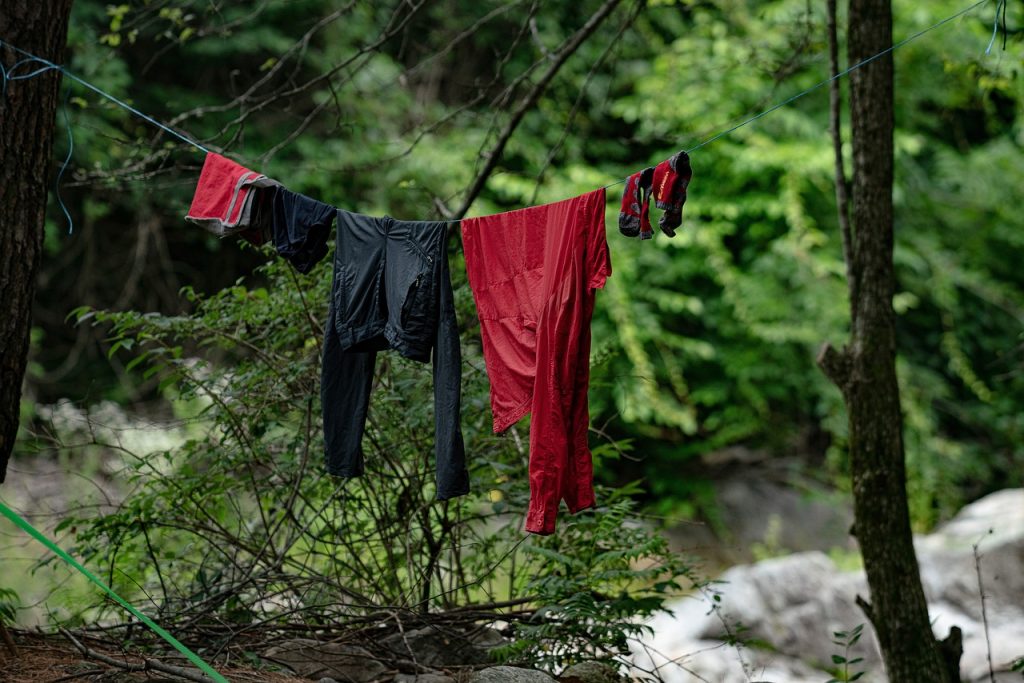
Here are a few methods to dry wet clothes quickly while camping in the rain:
- Hang dry using a rope or clothesline: Find a shelter or hang the clothes inside your tent. Make sure they are spread out so that air can circulate them.
- Use a portable clothes dryer: Some camping gear stores sell portable clothes dryers powered by propane or a camp stove. This can be a quick and efficient way to dry clothes.
- Use a towel or cloth: Wring out excess water from the clothes and lay them on a large, absorbent towel or cloth. Roll up the towel or cloth and squeeze as much water as possible. Then hang the clothes up to air dry.
- Use a campfire or stove: Hold wet clothes close to the heat source until dry. Be careful not to get too close, which could cause the clothes to fire.
Note: These methods may be slower than regular dryers, but they can help dry your clothes in rainy camping conditions.

